|


256-bit encryption
$500,000 protection

|
USS ESSEX model
USS Essex was a sailing frigate that participated in
the Quasi-War with France, the First Barbary War,
and in the War of 1812. She was launched on 30
September 1799. On 6
January 1800, USS Essex became the first
US Naval ship to cross the Equator. In this journey,
she also made her mark as the first US man-of-war to
double the Cape of Good Hope.
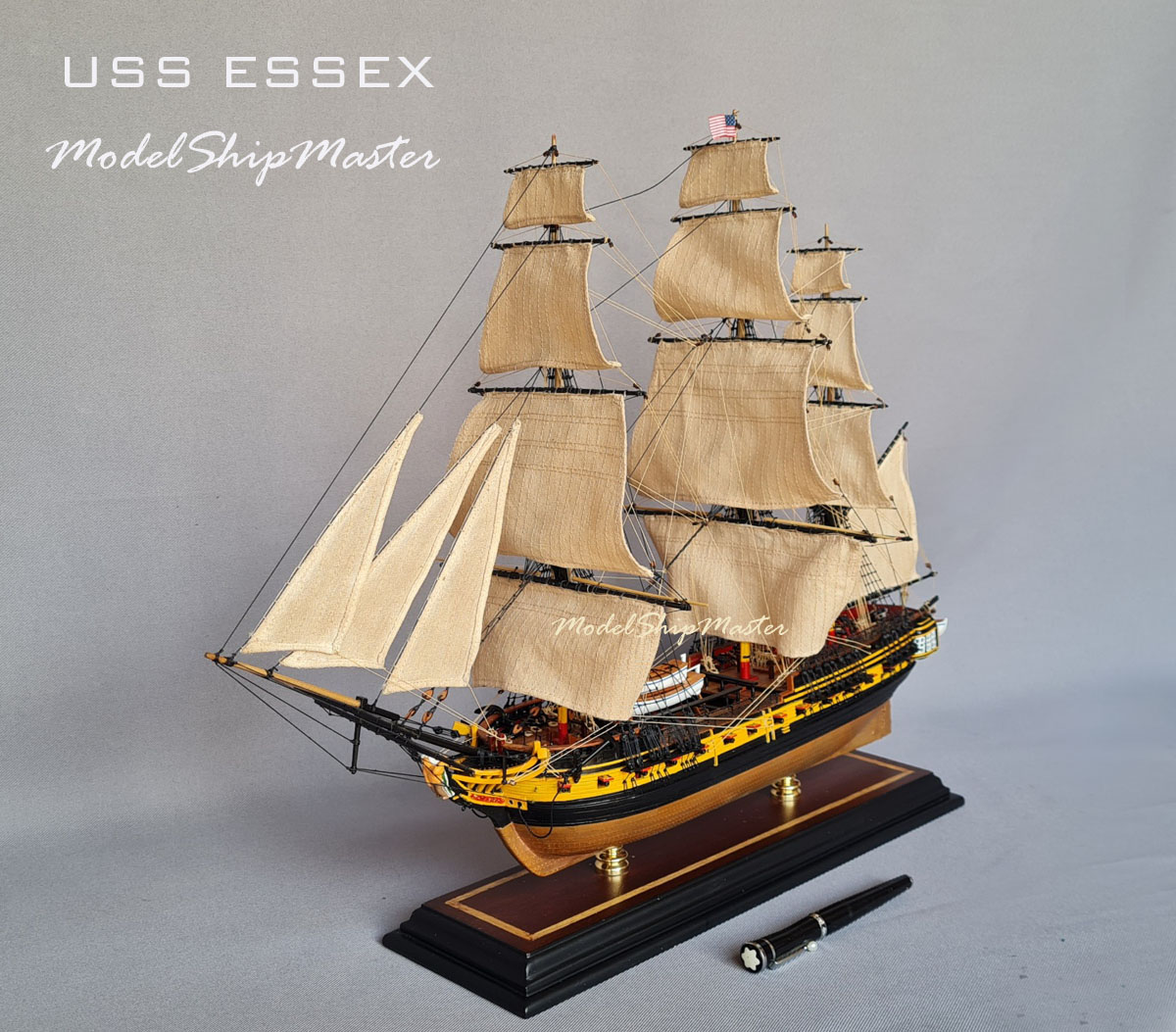
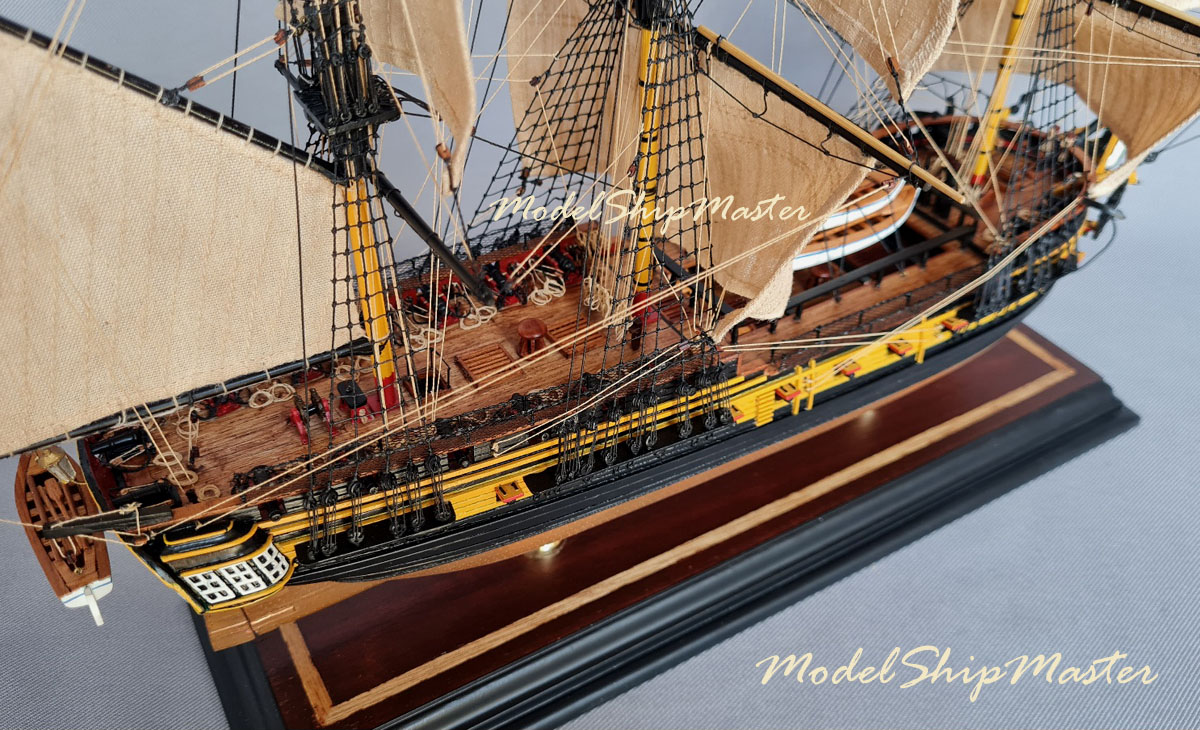
When
war was declared against Britain on 18 June 1812,
USS Essex was commanded by Captain David Porter. On
11 July near Bermuda she fell in with seven British
transports and by moonlight engaged and took one of
them.
On 13 August,
USS Essex captured the sloop HMS Alert and won the
distinction of being
the
first Yankee warship to capture a ship of the Royal
Navy.
Porter kept his gunports closed to disguise as a merchantman. This gave
confidence to
Alert
who reached within pistol shot range of USS Essex. Then
Essex
opened up her gunports and devastated Alert. In keeping
with the chivalrous practice of the times, Porter
then allowed Laugharne to sail his ship to
Newfoundland so he could disembark his crew, after
which he was honor-bound to surrender the Alert to
American authorities in New York.
During her first eight
weeks at sea before that battle, USS Essex had taken
nine British commercial ships.
In a stunning feat of naval daring, Captain David
Porter proceeded to carried off an extended cruise,
far from American waters, repairing and provisioning
both his own ship and those he had taken as prizes.
During 17 months at sea he went on to sweep the vast
reaches of the Pacific of British merchantmen,
whalers, and warships, taking 16 vessels in all. The
youngest member of the Essex crew was 10-year-old
midshipman David Glasgow Farragut, who would become
the first admiral of the US Navy. Farragut, who was
Captain Porter's foster son, remained with the ship
for the next two years.
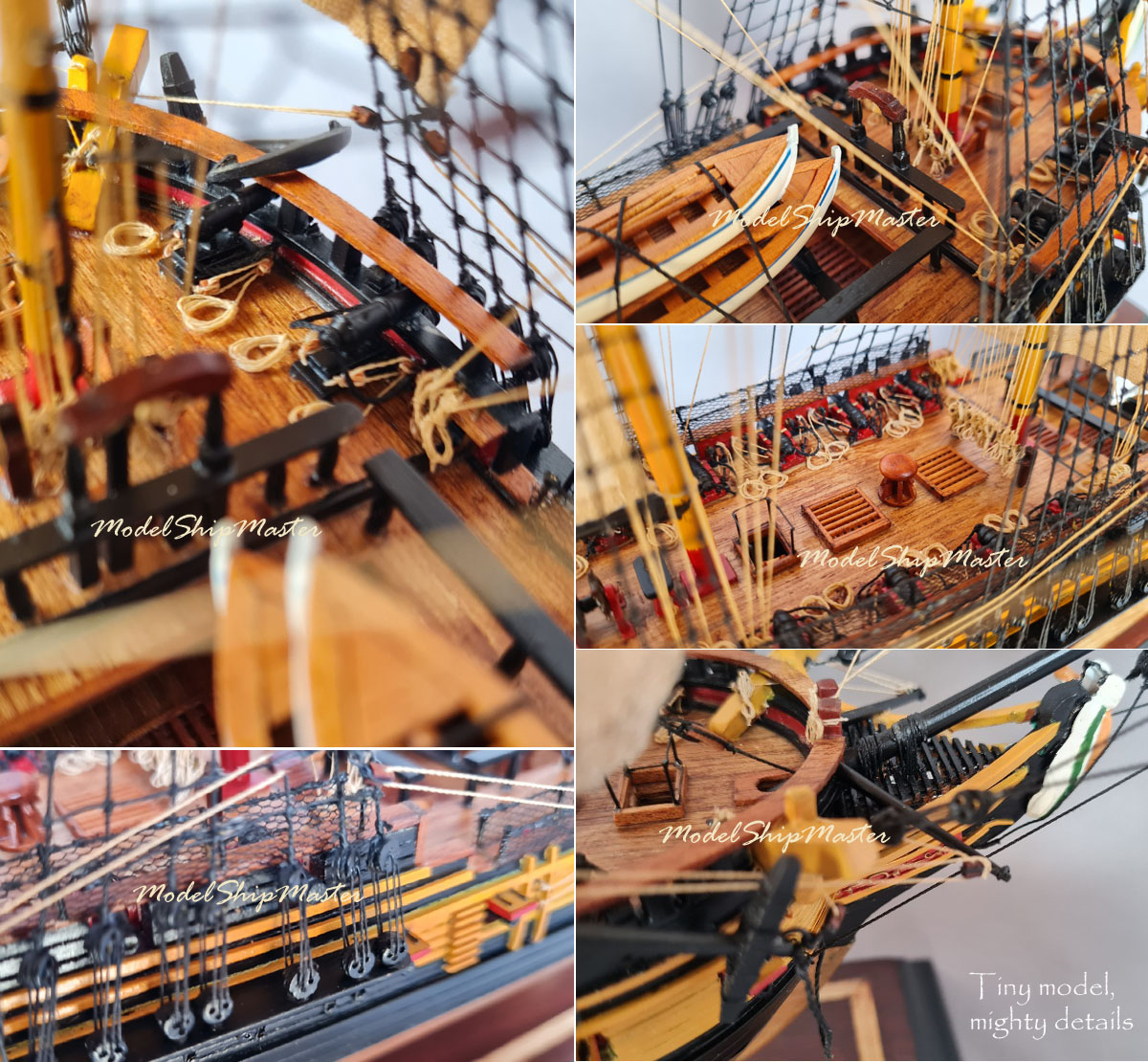
A
British fleet was finally dispatched to pursue the
USS Essex. In
January 1814, USS Essex sailed into neutral waters at
Valparaíso,
Chile,
only to be trapped
there for six weeks by the British frigate HMS
Phoebe and the sloop-of-war HMS Cherub. On 28 March 1814, Porter determined to gain
the open sea. Upon rounding the point, USS Essex lost
her main top-mast to foul weather,
putting her at a serious disadvantage in the gun
battle. For
2+1⁄2 hours, Phoebe and Cherub bombarded the
USS Essex from
long range. Eventually, the hopeless situation
forced Porter to surrender. Her crew fought valiantly. Of
255 men, 58 were killed and 65 wounded.
President Madison paid tribute to the USS Essex with
his words "her loss is hidden in the blaze of
heroism."
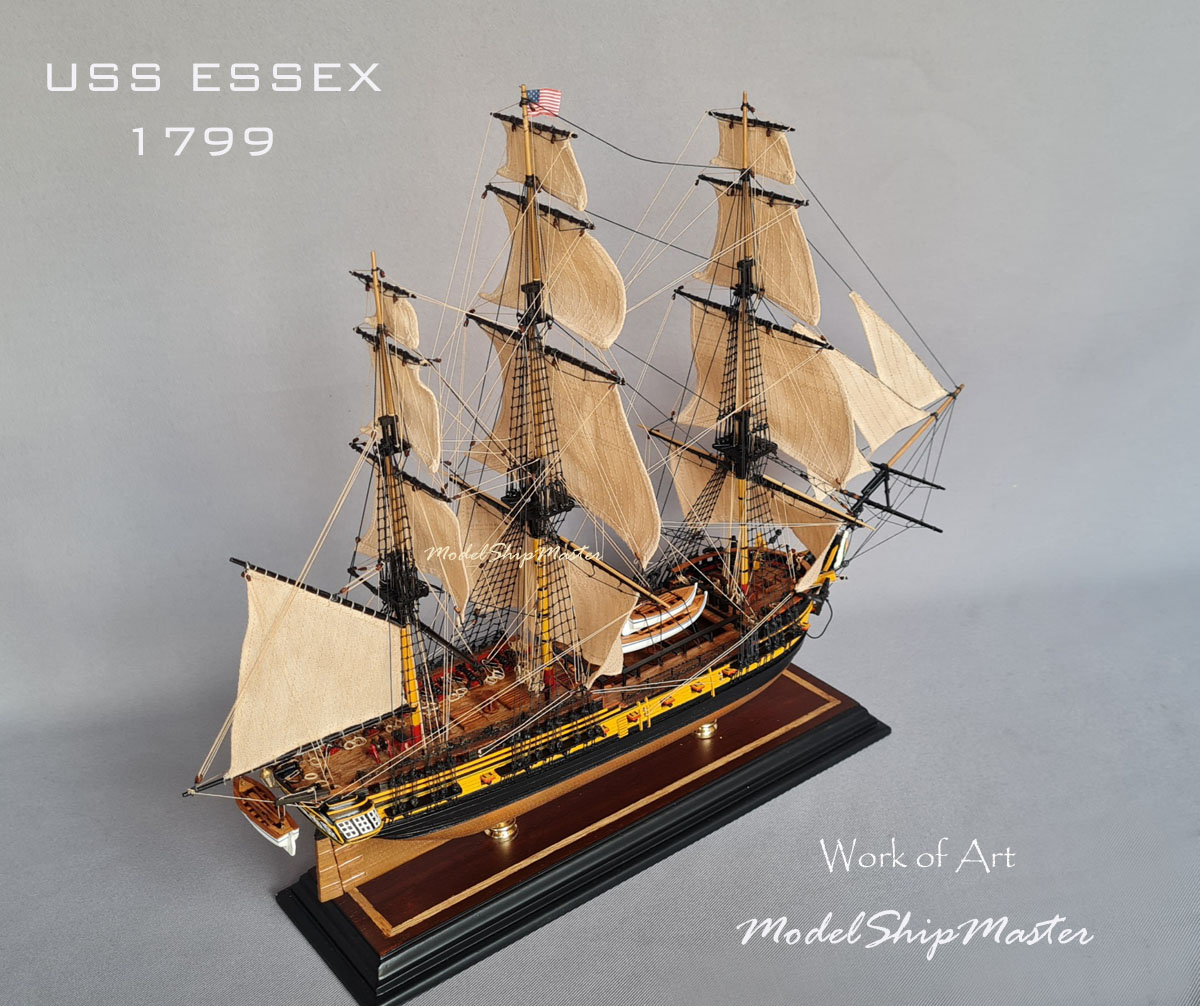
Our accurate USS Essex model features:
- Copper-plated bottom:
hundreds of
individual copper pieces installed by hand
- Authentic
rigging system comprised of many different sizes of
rope
- Sails: not bright white, not
rigid
plastic,
no dark rims.
23" long x 17" tall x 9.5" wide
$3,350
 Crating, shipping, and insurance
in the contiguous US included (about $300 value.) Other places: $400 flat
rate.
This model is in stock and can be shipped within 5
business days. Crating, shipping, and insurance
in the contiguous US included (about $300 value.) Other places: $400 flat
rate.
This model is in stock and can be shipped within 5
business days.
37" long x 29" tall x
11' wide $5,430. Crating,
shipping,
and insurance in the contiguous US included (about $500
value.) Other
places: $700 flat rate.
Model is built per commission only. We require only
a small deposit to start the process.
Click here for
lead time.
Illuminate this model in a
special occasion, dimly lit room:
$300 Powered by a
standard 9v battery placed under the base for your
convenience. This option is available on the larger
model only.
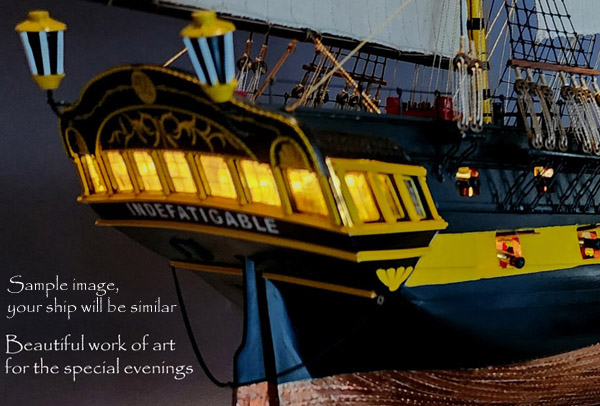
"I just want
to tell the crew at MSM they're superb! USS Essex model,
the ship you rushed to my father's house before
Christmas, blew him away. Your Essex actually stole the
main spot on his mantel. I have never been been let down
by MSM. You guys get it right everything (and I've
bought or commissioned many ships) Thanks again and
again, Alex"
Learn more about the USS
Essex here:
https://en.wikipedia.org/wiki/USS_Essex_(1799)
|